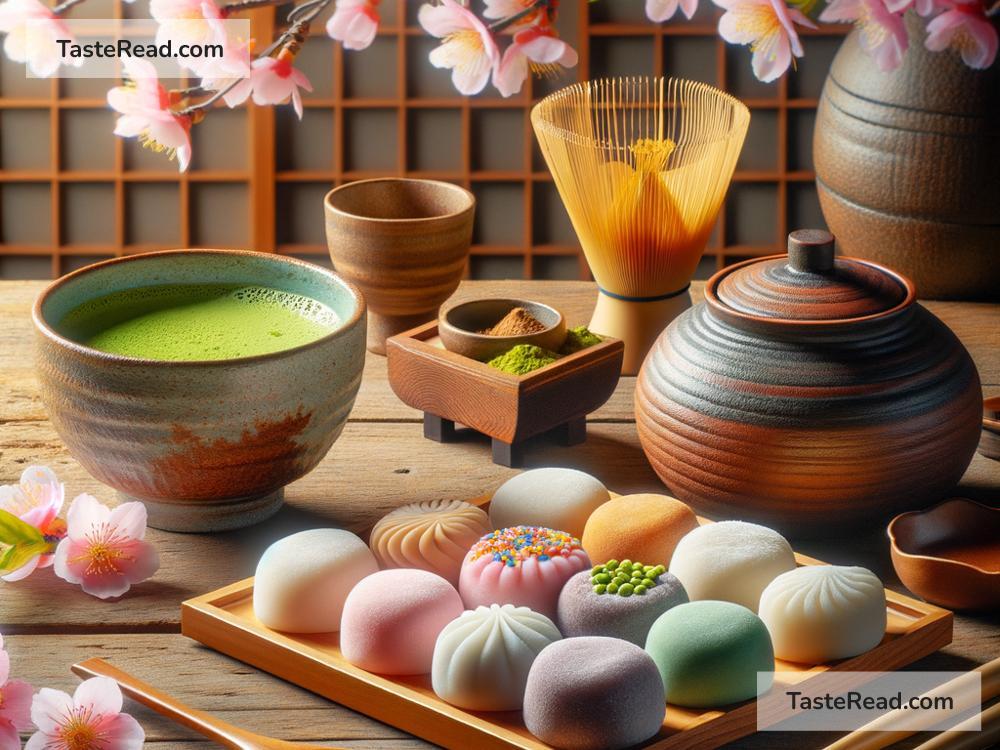The History of Japanese Mochi: A Sweet Tradition
Mochi is a famous Japanese treat that has been enjoyed for hundreds of years. Soft, chewy, and a little sticky, this rice cake is made from glutinous rice and has become a favorite snack not just in Japan, but around the world. Behind its simple look, mochi has a fascinating history tied to Japanese culture, celebrations, and traditions. Let’s take a journey through the story of this unique dessert!
What Is Mochi?
Mochi is made from glutinous rice, also known as mochigome. The rice is steamed and then pounded into a sticky dough. This dough is shaped into small round cakes or stretched into sheets for various uses. The process of making mochi takes time and requires teamwork, especially when prepared using traditional methods. Often enjoyed sweet or savory, mochi is versatile and can be filled with sweet bean paste, ice cream, or wrapped around fruits like strawberries. Its soft texture and simple taste make it popular.
How Did Mochi Begin?
Mochi has roots dating back over 1,000 years. It is believed to have started during the Japanese Heian period (794–1185). At that time, mochi was a food enjoyed mainly by the nobility and religious figures in ceremonies. One of its early purposes was as an offering to kami, or gods, in Shinto shrines. People believed mochi had spiritual powers and was connected to good luck, prosperity, and health.
Over time, mochi transitioned from being a ceremonial food to a special treat for the common people. Its connection to celebrations and rituals remained strong. Mochi became a symbol of togetherness and happiness, often shared during important events.
Mochi and Japanese Festivals
One of the most well-known traditions involving mochi is New Year’s celebrations, or Oshogatsu. Special mochi dishes, called kagamimochi, are prepared during this time. Kagamimochi consists of two stacked mochi cakes with a tangerine or orange on top. The layers symbolize the passing of time and hope for blessings in the future. After the New Year, the mochi is broken and eaten as part of another practice, ensuring no food goes to waste.
Another popular mochi-related festival is Hina Matsuri, also known as Doll’s Day or Girls’ Day, celebrated on March 3rd. During this event, colorful mochi called hishi mochi (shaped like diamonds) are displayed alongside traditional dolls. Cherry blossom season is also a time when mochi shines. Sakura mochi, a pink rice cake wrapped in a preserved cherry blossom leaf, is a must-have snack during hanami (flower viewing) parties.
Many other Japanese festivals and seasonal events include mochi as part of their customs, showing how deeply it is tied to the culture’s way of celebrating life.
The Traditional Mochi-Making Process: Mochitsuki
Making mochi is not just about cooking—it’s an art and a tradition itself. In the old days, families and communities would come together for mochitsuki, the traditional mochi-pounding ceremony. This process involves steamed glutinous rice being placed into a large wooden mortar called a usu.
One person uses a heavy wooden mallet to pound the rice while another quickly turns and wets the rice between strikes. Timing and teamwork are critical to avoid injury! The pounding turns the rice into a smooth and sticky dough. Once ready, the dough is shaped into small cakes.
Even though machines now make most mochi in modern times, some communities still hold mochitsuki events, especially during the end-of-year holidays. These gatherings promote unity and are a fun way to honor tradition.
Modern Mochi
Today, mochi comes in many shapes, flavors, and styles. Traditional mochi has evolved to include modern innovations, such as mochi ice cream, which became popular globally. Mochi ice cream is a combination of a soft mochi shell wrapped around creamy ice cream, creating a delicious contrast of textures.
Other creative versions include mochi donuts, mochi pancakes, and even savory mochi dishes. Stores in Japan and beyond sell pre-packaged mochi, making it more accessible to people who might not participate in traditional mochi-making methods. Despite these updates, the heart of mochi as a symbol of celebration and tradition has stayed the same.
Mochi’s Global Popularity
While mochi remains a key part of Japanese culture, its appeal has reached countries around the world. In recent years, mochi has gained popularity in places like the United States, Europe, and Southeast Asia. Desserts like mochi ice cream and colorful mochi rice cakes are now sold in supermarkets and restaurants everywhere. Social media has also helped showcase mochi’s delicious appeal, drawing more people to try this chewy treat.
A Symbol of Tradition and Joy
Mochi is more than just food—it represents Japanese heritage, unity, and the joy of celebration. From ancient ceremonies to modern desserts, mochi plays a special role that connects the past with the present. Whether enjoyed at a festival, during the New Year, or simply as a sweet treat, mochi is a reminder of the rich traditions that continue to bring people together.
So the next time you take a bite of mochi, remember its journey through history. It’s not just delicious—it’s a taste of Japan’s cultural heart!


